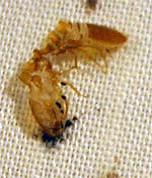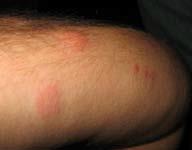Introduction to Bed Bugs

The common bed bug (Cimex lectularius) has long been a pest – feeding on blood, causing itchy bites and generally irritating their human hosts. The Environmental Protection Agency (EPA), the Centers for Disease Control and Prevention (CDC), and the United States Department of Agriculture (USDA) all consider bed bugs a public health pest. However, unlike most public health pests, bed bugs are not known to transmit or spread disease.
They can, however, cause other public health issues, so it’s important to pay close attention to preventing and controlling bed bugs.
Experts believe the recent increase in bed bugs in the United States may be due to more travel, lack of knowledge about preventing infestations, increased resistance of bed bugs to pesticides, and ineffective pest control practices.
The good news is that there are ways to control bed bugs. Getting good, solid information is the first step in both prevention and control. While there is no chemical quick fix, there are effective strategies to control bed bugs involving both non-chemical and chemical methods.
Bed bugs can be hard to find and identify, given their small size and their habit of staying hidden. It helps to know what they look like, since the various life stages have different forms.
Appearance of Bed Bugs
(Cimex lectularius L.)

Adult bed bugs, in general, are:
- about the size of an apple seed (5-7 mm or 3/16 – 1/4 inch long);
- long and brown, with a flat, oval-shaped body (if not fed recently);
- balloon-like, reddish-brown, and more elongated (if fed recently);
- a “true bug” (characteristics of true bugs include a beak with three segments; antenna that have four parts; wings that are not used for flying; and short, golden-colored hairs); and
- smelly, with a “musty-sweetish” odor produced through glands on the lower side of the body.
Young bed bugs (also called nymphs), in general, are:
- smaller, translucent or whitish-yellow in color; and
- if not recently fed, can be nearly invisible to the naked eye because of coloring and size.
Bed bug eggs, in general, are:
- tiny, the size of a pinhead;
- pearl-white in color; and
- marked by an eye spot if more than five days old.
Bed Bug Life Cycle

The life cycle of a bed bug is shown in the photograph below. During its lifetime, a bed bug will go through the following stages (Starting from the top left, moving counterclockwise):
- Eggs (1mm).
- 1st stage nymph (1.5 mm).
- 2nd stage nymph (2 mm).
- 3rd stage nymph (2.5 mm).
- 4th stage nymph (3 mm).
- 5th stage nymph (4.5 mm).
- Unfed adult female.
- Unfed adult male.
How to Find Bed Bugs

If you have an infestation, it is best to find it early, before the infestation becomes established or spreads. Treating a minor infestation, while an inconvenience, is far less costly and easier than treating the same infestation after it becomes more widespread.
However, low-level infestations are also much more challenging to find and correctly identify. Other insects, such as carpet beetles, can be easily mistaken for bed bugs. If you misidentify a bed bug infestation, it gives the bugs more time to spread to other areas of the house or hitchhike a ride to someone else’s house to start a new infestation.

Bites on the skin are a poor indicator of a bed bug infestation. Bed bug bites can look like bites from other insects (such as mosquitoes or chiggers), rashes (such as eczema or fungal infections), or even hives. Some people do not react to bed bug bites at all.
For more information contact:
Patrick Martens
Alberta Fire and Flood

Leave A Comment
You must be logged in to post a comment.